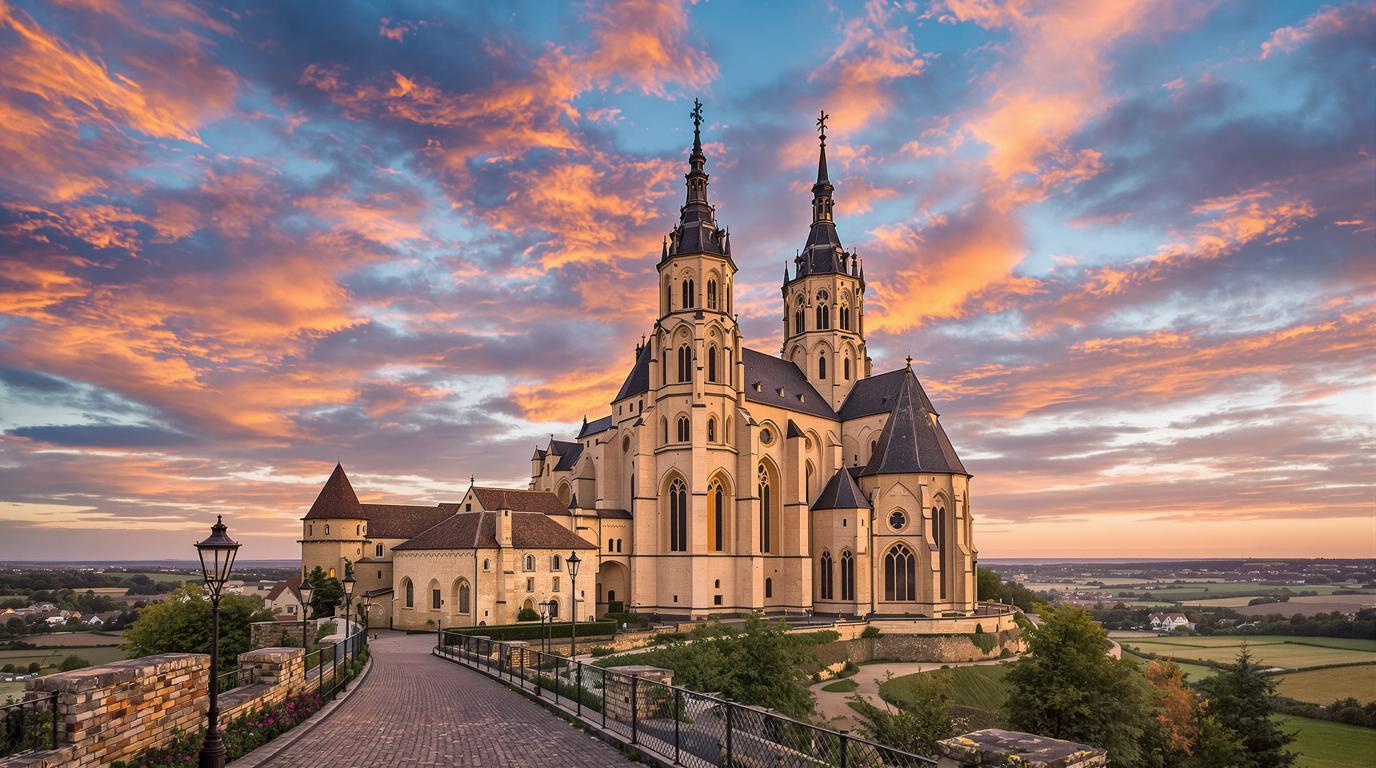My first encounter with Vézelay left me speechless. Standing atop what locals call the “Eternal Hill,” I watched golden light wash over the surrounding Burgundy countryside while 434 villagers went about their daily routines in the shadow of a UNESCO basilica that draws almost a million visitors annually. This extraordinary imbalance – where residents are outnumbered 2,000 to 1 by tourists – speaks to Vézelay’s almost magnetic pull on travelers seeking authenticity and spiritual connection.
The basilica that launched a thousand pilgrimages
The crown jewel of Vézelay is undoubtedly the Basilique Sainte-Marie-Madeleine, a masterpiece of Romanesque architecture. This 11th-century basilica houses what many believe to be the relics of Mary Magdalene, making it one of Christianity’s most significant pilgrimage sites for over a millennium.
What struck me most was the basilica’s remarkable light phenomenon. Twice yearly, sunlight creates a perfect pathway across the nave, a deliberate medieval design that local guide Jean-Pierre explains was no accident: “The architects created a sacred geometry where heaven touches earth. This is why pilgrims still come – to experience something beyond themselves.”
A medieval time capsule perched on a hill
Vézelay isn’t just another pretty French village – it’s a remarkably preserved medieval community frozen in the 12th century. The main street, Rue Saint-Pierre, winds uphill toward the basilica, flanked by limestone buildings that have witnessed centuries of history.
The village’s significance goes beyond architecture. Eleanor of Aquitaine and Louis VII gathered here to launch the Second Crusade in 1146. Thomas Becket sought refuge here before his assassination. Richard the Lionheart and Philip II met here before departing for the Third Crusade.
Hidden gems beyond the basilica
While most visitors beeline for the basilica, the real magic happens in Vézelay’s quieter corners. The Musée Zervos houses an impressive collection of modern art, including works by Picasso and Miró, in a beautifully restored medieval building.
Local winemaker Marie Delorme invited me to taste Vézelay’s emerging wine scene: “Our terroir has been overshadowed by bigger Burgundy names, but our chardonnays offer something special – minerality from our limestone soils and freshness from our elevation.”
A gateway to undiscovered Burgundy
Vézelay serves as an ideal base for exploring the lesser-known corners of Burgundy. Just 30 minutes away, the Morvan Regional Natural Park offers hiking trails through ancient forests and serene lakes for swimming.
Unlike staying on islands with mountaintop cabins or sunny Scottish isles, basing yourself in Vézelay puts you at the crossroads of history, spirituality, and gastronomy.
When to experience Vézelay’s magic
Visit during spring or fall to avoid summer crowds while still enjoying pleasant weather. The summer solstice (June 21) showcases the basilica’s famous light alignment, while July 22 brings the Mary Magdalene festival with medieval processions and music.
“Vézelay operates on two timelines,” explains town historian Claude Renoir. “Tourist season and local season. Come in October, and you’ll see the village as it’s been for centuries – unhurried, contemplative, and profoundly beautiful.”
How to reach this hilltop marvel
While not as complex as multi-country train journeys, reaching Vézelay requires some planning. The nearest train station is Sermizelles-Vézelay (10km away), connected to Paris-Bercy station (2.5 hours). From the station, local taxis or seasonal shuttles complete the journey.
As I departed Vézelay, watching the basilica’s spires disappear in my rearview mirror, I understood why this tiny French village with its UNESCO basilica continues to captivate travelers. It offers something increasingly rare in our hurried world – a place where time slows down, where centuries of spirituality permeate the stones, and where the extraordinary beauty of ordinary French life unfolds against a backdrop of unparalleled historical significance.
